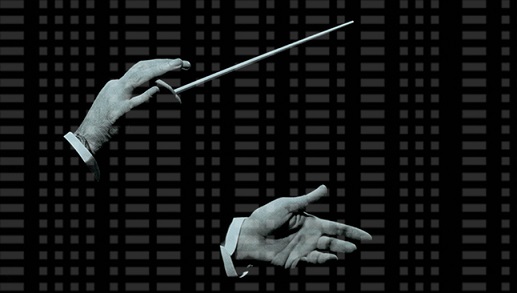 In today’s fragmented world, the successful marketer needs to align all their resources to achieve a specific objective. This requires coordination within and without the company to ensure all activities work together in harmony. But the comparison with the role of the conductor goes far beyond the need for harmony.
In today’s fragmented world, the successful marketer needs to align all their resources to achieve a specific objective. This requires coordination within and without the company to ensure all activities work together in harmony. But the comparison with the role of the conductor goes far beyond the need for harmony.
When the comparison to conducting an orchestra struck me, I went in search of interviews with great conductors describing their art. As a result, I found this TED Talk by Itay Talgram, conductor and business consultant. I encourage you to watch the first four minutes or so, if only to see a joyous performance conducted by Carlos Kleiber. Talgram suggests that part of the art of conducting is to bring together the stories of the composer, musicians, instrument makers, audience and more so that,
“…all those stories are being heard at the same time. This is the true experience of a live concert, that’s a reason to go out of home.”
And in that regard, a great concert is not so different from a great marketing campaign. It inspires people to want to experience something. However, as I suggested above, I think the analogy goes even further. If you think what the conductor has to do to bring off a great performance, there are five things that they need to do well. The same can be said of a great marketer.
First, they must know the principles of their art, be it music or marketing. The problem is that many marketers seem to have either forgotten the principles of brand growth, or never learned them in the first place, transferring into the role from an engineering or finance background.
Second, they must know the original score that is to be performed, and interpret it in a way that resonates for a modern-day audience. A marketer can no more change the heritage of their brand than a conductor can make changes to the score of Beethoven’s Fifth. To do so risks alienating the audience.
Third, now that the conductor has an idea of what might resonate with the audience, they need to communicate that intention to the orchestra, which will require clarity and the imposition of the conductor’s will; they cannot have musicians deciding to do their own thing.
Fourth, they rehearse the orchestra to make sure everyone knows their part, plays coherently and in harmony. One of the reasons Kleiber appears so happy in the video linked to above is that everyone in the orchestra knows exactly what they are meant to do and when (Talgram notes that the musicians hardly even look at the conductor).
Lastly, the conductor ensures that everything comes together to create a consistently positive and memorable experience. An experience that can be repeated to reach as wide an audience as possible.
Written by Nigel Hollis,Executive Vice President and Chief Global Analyst at Kantar’s Insights Division.


